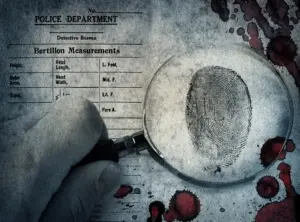Introduction: what is the chain of evidence?
The chain of evidence is a formal way of linking evidence together so that it can be used in a court of law. The first step in the chain of evidence is the seizure of evidence. This can be anything from physical objects to recordings of conversations. It may also include digital assets like photos, video, meta data, GPS coordinates, text messages and social media accounts. Next, the evidence must be examined and analyzed to determine its authenticity and whether it is usable in a court case. If it is determined that the evidence is usable, it is then submitted to the prosecutors for review.
The purpose of the chain of evidence
In order to convict someone of a crime, the prosecution must present evidence that links the accused to the crime. This evidence is maintained within the chain of evidence, and it must be carefully guarded and preserved from the time of collection until the trial. The purpose of the chain of evidence is to ensure no one can tamper with or alter the evidence without being detected.
The chain of evidence begins with the collection of evidence at the crime scene. The police will collect all relevant evidence, including weapons, fingerprints, and DNA samples. They will also take photographs and make detailed notes about the scene. All of this evidence is then packaged and labeled for transportation to the crime lab.
At the lab, technicians will analyze the evidence and prepare reports detailing their findings. These reports are presented to the prosecutor along with the investigative reports. The prosecutor decides which pieces of evidence will be used in court.
The components of the chain of evidence
The components of the chain of evidence are exceedingly important in criminal investigations. The chain of evidence consists of the following:
- The first link in the chain is the crime scene.
- The second link is the collection of physical evidence at the scene.
- The third link is the transportation of the evidence from the scene to the lab.
- The fourth link is the examination and testing of the evidence at the lab.
- The fifth link is the documentation and storage of the evidence.
- The sixth link is when investigators report their findings to prosecutors.
- The seventh link is when prosecutors make a decision whether to file charges. And, finally,
- The eighth link is when a defendant goes to trial and a verdict is reached.
How to create and maintain the chain of evidence
The chain of evidence is a critical part of any criminal investigation and must be maintained to ensure the evidence collected is admissible in court. There are several steps that investigators must take to create and maintain the chain of evidence as outlined above.
Investigators must secure the crime scene. They must make sure that the scene is safe and that no one contaminates the scene. They must also make sure that all evidence is documented, collected and preserved.
Second, investigators must identify and collect all evidence at the scene. This includes both physical and digital evidence. They must make sure to document where each piece of evidence was and how it was found.
Crime scene technicians and detectives must package and label all evidence properly. Each piece of evidence should be packaged separately and labeled with a unique identifier. This helps to ensure that no pieces of evidence are lost or misplaced.
Proper Training
When it comes to evidence collection, proper training is key. This is especially true for law enforcement officers and investigators who may need to collect evidence at a crime scene. In order to ensure that all valuable evidence is collected, agencies should provide comprehensive training on how to properly collect different types of evidence. But sometimes that’s not enough which is where we come in.
One of the most important topics we cover throughout our courses at Revelations Training & Investigations is learning the proper way to identify, package and preserve evidence. Officers and deputies must take care not to contaminate or damage any potential evidence, which can often be challenging when working in a fast-paced environment. It’s also important to be aware of any potential safety hazards when collecting evidence at a crime scene.
In addition to learning how to collect different types of evidence, investigators also need to be familiar with the laws governing evidence collection in their jurisdiction. These laws are often called the rules of evidence.
Proper evidence collection is key in order to securing a conviction. Unfortunately, sometimes evidence is mishandled, contaminated or overlooked. In order to prevent this from happening, law enforcement officers must receive the proper training.
Our online law enforcement training includes instruction on how to identify and handle potential evidence, as well as how to preserve the chain of custody. Officers are taught the importance of documentation and proper labeling of evidence and on how to handle and store the evidence safely.
It is important that law enforcement agencies provide regular training for their officers in order to ensure that they are familiar with current best practices for evidence collection in an ever changing world.
Most people would be surprised to learn our online law enforcement training meets and surpasses this need. Our training varies in length and intensity, but it is essential to evolving your career in law enforcement.
Revelations Training and Investigations offers the training you need to maintain a successful law enforcement career. Our online program is designed to provide you with the knowledge and skills you need to succeed in this field. We offer courses in a diverse field of investigative topics including:
Our program is flexible and convenient, allowing you to study at your own pace on your own timeline. You can access our course materials anytime, anywhere there is an internet connection. You maintain lifetime access to your training course, the training materials and get free knowledge updates when our training courses are updated.
Our instructors are experienced professionals who will help you develop the skills you need to excel in your career.
In conclusion, online law enforcement training is an excellent way to develop the skills necessary to continue to be a successful law enforcement officer. The courses are convenient, affordable, and offer a variety of topics and our instructors are experienced law enforcement professionals who are dedicated to providing you the best possible training.





